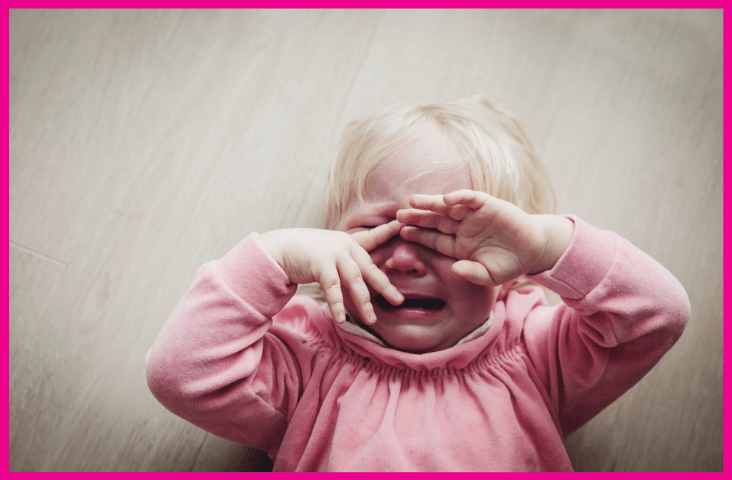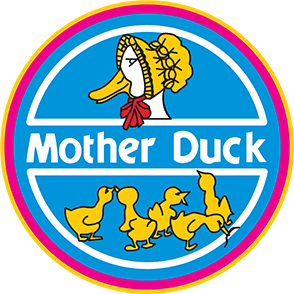
When Our Children’s Emotional Pain or Discomfort Is The Greatest Opportunity for Learning
It is incredibly challenging parenting young children. Not only can it be physically taxing (sleepless nights, holding them in your arms, tidying up the never-ending mess), it is emotionally taxing too. There is something powerfully overwhelming when your child is experiencing big feelings – sadness, anger, worry, frustration. I have often thought that as a parent, when my children have been really struggling emotionally (you know those days where they just burst into tears or end up melting down on the ground every 5 minutes?), that it almost feels more challenging to watch them experience their emotional pain, than what it would be to experience the pain first-hand myself. Perhaps this is because our connection to our children is so powerful that to watch them suffer or struggle, is far more difficult because we are not always able to “fix” the problem or make their pain go away. I know that this can cause me to feel very out of control and feeling out of control can be very uncomfortable.
Throughout my parenting journey, I am constantly catching myself trying to “fix” my child’s big emotions. Their big emotions trigger my sense of worry or need to control things and in an attempt to fix their big emotions, I am also subconsciously trying to fix how uncomfortable I feel watching their distress. Do any of these phrases sound familiar?
- “Honey, you don’t need to cry – we can fix the toy,”
- “There is no need to get frustrated about that!”
- “That’s a silly thing to get upset about.”
- “Wipe those tears off your face – it’s going to be fine!”
I have heard these words come out of my mouth a lot over the years and I hear them regularly come out of the mouths of other adults (from parents, grandparents, educators and teachers alike). Though well-intentioned and often with a “sing-song” tone of voice, unfortunately, the words themselves are enough to leave a child feeling dismissed and even worse, out of control. Because let’s face it – even as adults when we feel really sad or really angry, it’s not like we can just flick a switch and turn the feelings off. Our brains are just not wired that way (if they were, being human would be a lot more simple- right?). When a trusted person whom we love and are seeking support from “dismisses” how we feel, even as adults, we can very often experience a sense of shame and disconnection (making us feel worse!).
Expecting children to “get over” or “get past” their feelings isn’t realistic and although on the surface the feelings may go away, this dismissive approach does not build a child’s ability to be resilient. It just teaches them that the world can’t handle their pain or big emotions, that big emotions are wrong, that discomfort should be avoided at all costs, or (terrifyingly) that they themselves are a pain and discomfort to others.
Is it really about “bouncing back” or rather, “leaning in and listening”???
Resilience is a word that is thrown around a lot these days as we know that it is a critical factor in supporting holistic development and healthy emotional and mental wellbeing. One of the phrases that it used a lot to describe what resilience is, is “the ability for a person to bounce back when they are faced with something challenging”. We picture the child who trips over but can stand back up again quickly, or the uni student who fails an assignment, so throws themselves into the further study to better their marks next time. Whilst these two examples are certainly demonstrating “resilience”, the danger of this mentality of “bouncing back” from hard things, is that we often ignore the emotional or physical pain that may have been present when that child or student (or adult) experienced that fall or that failing. And perhaps sometimes we are so focused on the “bouncing back”, that we neglect to learn to embrace and walk through the pain and emotion surrounding different challenges we face. After all, some of the greatest life lessons can be learnt when we lean in and listen to what our pain may be teaching us about our character and about how we see ourselves…

Some of the most supposed resilient people I know are physically strong and they continue to “bounce back” from really challenging situations and yet, they continue to push down pain and hurt. The “bouncing back” almost becomes a “band-aid” that covers the wound caused by the fall. So, whilst the person is up and moving again and you can’t see the wound that the fall caused (they have “bounced back”), the wound is still there and continues to fester underneath the band-aid. Is this resilience, or is this suppressing big and complicated emotions that over time, just like an untreated infection will seep into the bloodstream and make someone very ill? I have journeyed this myself – thinking I was being “strong” by not asking for help or pushing through challenges, only to continually suppress anxiety and anger in the “spirit of being resilient”. I could only keep it up for so long before the untreated, infected wound threatened to make me ill…
Perhaps resilience is less about the ability to bounce back, and more about a person’s ability to embrace the challenge and sting of the fall?
- To sit with the big emotion that comes with a failing.
- To acknowledge the pain of disappointment.
- To not be as quick to “bounce back”, but rather to purposefully lean into the struggle and discomfort as an opportunity for learning.
Focusing on being (or looking) “fine” or “getting on with things” can too often be a masking or avoidance strategy that prevents someone from moving through a difficult or “big” emotion. Masking our authentic emotions and struggles from ourselves and trusted others can be so dangerous for children and adults, as long term big feelings can sit inside and fester until they take over. We have to “feel it” (whether that feeling is anger, sadness, grief, disappointment etc), acknowledge it, but learn to express it without causing harm to ourselves or others in order to move through it.

So how do we support children to do this? Here are a couple of ideas:
- If your child trips and falls, respond in a calm manner:
“Honey, I saw you fall. Are you hurt? Do you need help to get up?”
(Building a pathway of connection and an understanding that it is “okay” to ask for help).
- If your child breaks their toy, respond with validation and offer some strategies to help them process their feelings:
“I’m sorry your toy is broken. I can understand that you feel sad about that. Do you need a cuddle or do you need to go have some time on the swing? And maybe once you feel a little better we can work together on fixing your toy?”
- If your child has a meltdown in the shopping centre because they want that lollypop at the checkout, (take a deep breath first!) and respond in a calm and genuine manner:
“I understand you want the lollypop and that you are upset/angry/disappointed I have said ‘no’. It’s hard when we really want something that we aren’t able to have. I get it.”

I see your pain. I see your struggle. I see YOU:
Validation and empathy (I understand… I see…I get it) and naming of emotions/feelings are two very powerful strategies to intentionally support your child’s understanding of their emotions and at the same time modelling empathy and connection. These examples above are communicating to your child that you (as the trusted adult in their world) aren’t afraid or put off by their big emotions and that you will support them through how they feel because you love them. Not only do these strategies best support and calm the part of the brain that takes over in big emotion (the amygdala), they also support a child’s emotional intelligence. Supporting children to develop emotional intelligence and learning to lean into the growth that comes with pain, discomfort or even grief, will go a long way in preventing long term mental health issues and suicide within our communities. It will support our precious little people (and even us big people) to be truly resilient.
Heidi Denner
Heidi Denner is a wife, mum and educator who is continually inspired by all she learns from the children she works with daily, (and in particular her own three children). As a mother to an autistic child, Heidi is an advocate for children’s needs, but also understands the significance of family mental health and wellbeing and how this is critical to a child’s overall development. As an avid reader and life-long learner regarding all things “neuroscience”, Heidi loves sharing current research regarding brain development so that families can understand how to best support their child’s needs and their own personal mental health and wellbeing.



